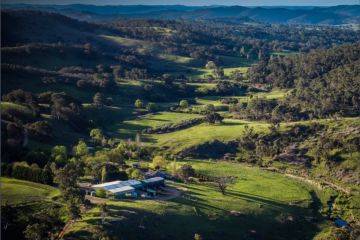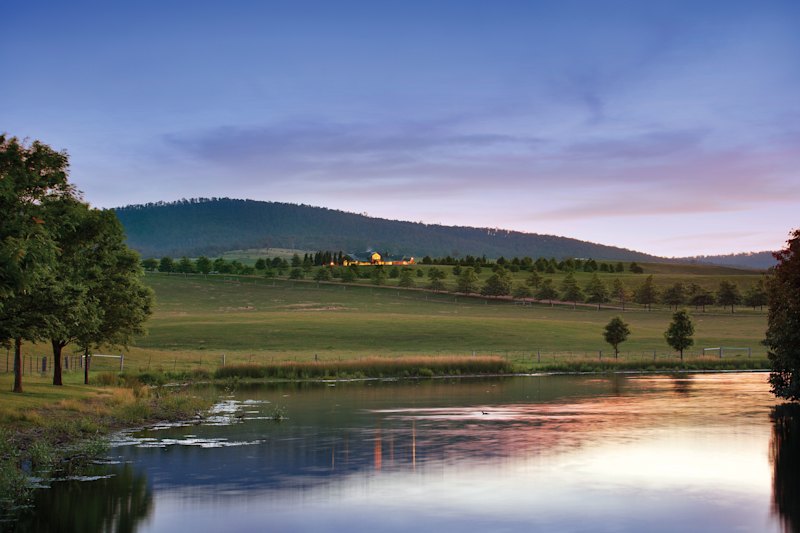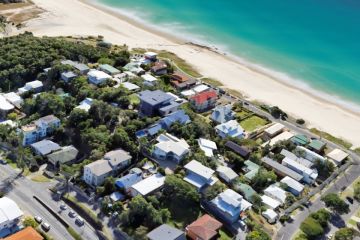Sustainable design: Canberra architect Maria Filardo on caring for the earth
With the building and construction sector responsible for around 40 per cent of global energy use – according to the United Nations Environment Programme – designing homes suitable to the climate with sturdy and long-lasting materials is becoming increasingly important in today’s world.
Sustainability can often be considered as a bit of a buzzword with people using the word as a marketing ploy, however, honest sustainably designed homes are incredibly important for the future of the world. A true sustainably designed home is one “that meets the needs of present generations without compromising on future generations“.
In a nutshell, this means homes which prioritise quality over quantity, use as many renewable resources and materials as possible, are fit for the environment and are not overly reliant on air conditioning and heating systems.
Architect Maria Filardo says while Canberrans may love the idea of a tropical-style house it’s just not suitable for our climate, “no matter how romantic someone might think that is”.
Maria is a Canberra based designer who owns a boutique practice fusing architecture and interiors. Her wide range of designs cover residential, retail, hospitality and small commercial. Maria also shares her passion with the next generation through teaching part time courses at CIT.
At the core of her work, is creating sustainable designs with style. We spoke to Maria about her approach and sustainability in design.
What drives your designs?
My designs are driven by purpose, responsiveness to client needs, comfort, and of course environmental impact. The final outcome is a place where the client wants to be in – a design that is socially sustainable.
Quality of light is very important to me; the impact on a well-lit space is immeasurable. There is also the added benefit that the house has little reliance on non-renewable resources – you use what is naturally and abundantly available. All of my designs have a strong focus on orientation so natural light fills the house and natural ventilation is also optimised.
Do you have any sustainable design principles?
- Analysing clients’ needs and asking questions if they really need so much space;
- Designing for climate;
- Correct use of shading – so sun enters the house in winter but is kept out in summer;
- Passive heating and cooling – designing in such a way that you don’t need to rely heavily on mechanical means to maintain a comfortable temperature all year round;
- Zoning a house to control heating needs;
- Sealing and insulating a building well;
- The economical sustainability of a project where it’s low maintenance and inexpensive to run for the entire life of the building.
What impact does size have when creating sustainable design?
It’s a very simple mathematical equation. The larger the house, the more materials and energy required, not only in the build but in the ongoing maintenance of the building life.
I believe it’s important to look at the entire cycle and energy input of a material. Some materials have very high embodied energy so it’s important to consider not only the impact of extracting a material in its raw form but the process to produce and also deliver to site. In simple terms, something locally made can be better than an imported product or material.
- Related: Pearce home shows value of renovations
- Related: Aranda home goes under the hammer twice
- Related: Cook home astounds at auction
So what materials do you like to use?
Material selection needs to be appropriate for use, respond to site, client taste, and where required have good thermal mass to absorb and re-radiate heat.
I personally like autoclaved aerated concrete as it has great thermal insulation qualities. I’m also keen on various lightweight cladding systems, but the essential thing is to have good insulation and seal a building.
Why did you embrace sustainable design?
We do not own the Earth, we have no inherited it, we borrow it from the next generation. It’s my social and professional responsibility to be as sensitive and considerate as possible, and mindful of all the decisions I make that have a lasting impact.
We recommend
We thought you might like
States
Capital Cities
Capital Cities - Rentals
Popular Areas
Allhomes
More







